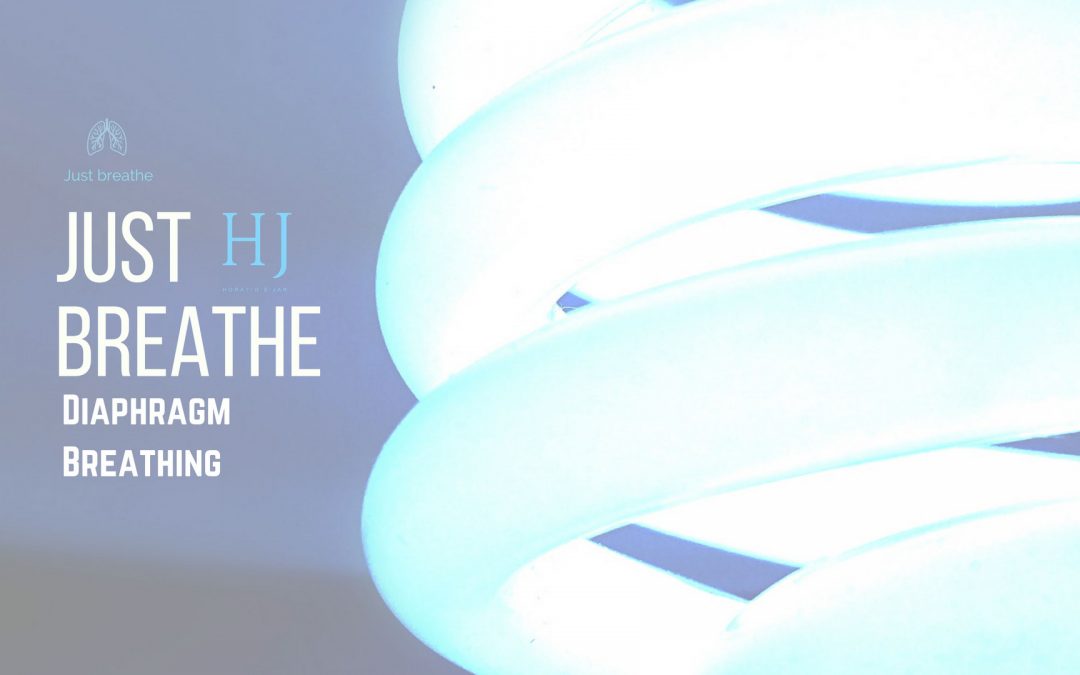Breathe Deeply
The breath regulates all the chemical and biological functions of the body and is essential to the health and wellbeing of every cell in your body and every living thing on this planet.
Learning to breathe more effectively will help you to live longer, get smarter and feel a whole lot healthier. Better breathing means your brain and your body will function better and you will reduce your risk of organ disease, cancer, irritable bowel syndrome and chronic inflammatory ailments like arthritis.
There is a myriad of research that proves concentrated breathing practices can have life-changing effects on your health and happiness and also the way you live your life. A simple and effective breathing exercise that is proven to increase blood flow and oxygen to the brain, lower your blood pressure and boost your metabolism is the simple exercise of diaphragmatic breathing.
Find out more inforamtion from these links on how your breath can heal your body, boost your metabolism and help you to live longer.
https://www.npr.org/2010/12/06/131734718/just-breathe-body-has-a-built-in-stress-reliever
https://www.ncbi.nlm.nih.gov/pmc/articles/PMC5455070/

Diaphragmatic Breathing Exercise
Put both your hands on the sides of your rib cage and begin breathing naturally in and out, like you would normally. You should feel your rib cage expanding in and out as air fills the lungs and as you breathe back out.
For most of us, our chest will also move up and down in a vertical action as the muscles in your chest and ribs pull up to expand the ribcage. This is called chest breathing or thoracic breathing and is, in fact, a dysfunctional way to breathe.
If you move your hands from the sides of your ribs down a little bit and then in (where the ribs finish), there is a cavity. This is your diaphragm, a large dome-shaped muscle that sits underneath your lungs. This domed shaped muscle, which has a left and right dome, separates your upper respiratory system from the digestive system. When you breathe from here you allow for proper amounts of oxygen to be absorbed into the body.
1. Close your mouth and shut your eyes and begin to breathe in and out through your nose
2. Relax your shoulders and sit or stand straight
3. Using your hands as feedback place them over the diaphragm and take a slow breath in from here and let the ribs expand sideways and the stomach to relax and move out.
4. Then exhale and feel the diaphragm drop and the ribs come in. (There should not be an up and down motion to your breath)
5. Practice breathing in and out through the nose letting the breath move in and out of the body in a slow, calm and rhythmic way, Try breathing like this for 4 minutes letting the body fall deeper into relaxation with the breath.
6. As you breathe notice any tension you may hold in the body and let your breath gently dissolve it.
As you breathe in, let the stomach relax and move with the breath. As you inhale the belly will naturally expand and as you exhale it will naturally come in. This slow rhythmic pump will soothe your whole body. *Try adding a small pause at the end of the inhalation and after you exhale, take another small pause. Eventually, your exhalation should be longer than your inhalation.
*remember never to force your breath or gasp for air*
Guest Contributor: Emily Rack
Business Name: Horatios Jar
Publisher: Digital Schools
Emily Rack is a yoga teacher, meditation instructor and freelance writer. She runs yoga and meditation classes, courses and workshops in schools and the wider community & is passionate about teaching the art of mindfulness
——-
PUBLISHER’S DISCLAIMER: The publisher of this blog post (Digital Schools PTY LTD) works in partnership with the school as a 3rd party provider to help build and maintain the school website. Digital Schools sources a range of experts who provide products and/or services to educational institutions and we work with them to produce and publish topical information in the form of blog posts that we think may be relevant, interesting or topical to families within the community. The views, opinions and content listed in this blog post are that of the guest contributor and/or publisher (Digital Schools). It should be noted that whilst the publisher and guest contributors are acting with the best intentions and in the best interests of the school and their community to provide helpful or interesting information, sometimes the content may not necessarily reflect the views of the school.
The information in this blog post is not meant to be used, nor should it be used, to diagnose or treat any medical condition. For diagnosis or treatment of any medical problem, consult your own physician. The school and the publisher of this blog post are not responsible for any person reading or following the information in this article who may experience adverse effects.
Any references to external websites or sources are provided for informational purposes only and do not constitute endorsement by the school or publisher in any way and the publisher and/or school cannot guarantee accuracy of information listed.
If you have feedback on any content on this platform, you can submit it to the publisher using the feedback link provided at the bottom of this page.



